Are there other options for a small (< 5mm long) low-g motion sensor than accelerometers? I don't need to measure the acceleration picking up my device causes, I just want a 1/0 signal when it happens. Preferably very low power, <10µA would be nice.
(IIRC I once saw a purely mechanical small sensor mentioned in an answer here, but I can't find it anymore. Purely mechanical means zero-power.)
- 394
- 2
- 14
-
1You mean like a piezo? – Ignacio Vazquez-Abrams Oct 16 '13 at 14:12
-
@Ignacio: Did you have a particular sensor in mind? I found a small piezo, see answer below, but I'm afraid a piezo's sensitivity will be too low for my purpose. They may be better suited to detect dropping. – Geert Goeteyn Oct 16 '13 at 15:06
-
There are ball-and-cage sensors that are about the size of a metal-can transistor. Is that the sort of thing you're looking for? – Dave Tweed Jan 27 '15 at 18:03
8 Answers
Found this one:

This is the SignalQuest SQ-MIN-200. It acts as a switch and chatters open and closed when moving:


It's only 3.6 mm long and 1.9 mm diameter and consumes as little as 50 nA.
- 394
- 2
- 14
I found this accelerometer (Freescale MMA8453Q), which looks interesting. I know, it's an accelerometer, not on/off, but at least it can operate at very low current (6 µA) at a data rate of 1.5/second, which should be enough to detect picking up.
- 506
- 1
- 6
- 17
- 394
- 2
- 14
+1 for the Signal quest product, I have used it with several designs. A product to avoid is the Switronics RBS020902-G. I had lots of failures (Stuck balls) with this one.
Sensolute has an even smaller solution: http://www.sensolute.com/en/products/index/
- 7,282
- 1
- 20
- 30
-
Both SignalQuest and Sensolute look nice. Do you have any idea about price? – Johan.A Oct 21 '13 at 13:51
-
Accelerometer manufacturers are making amazingly low power accelerometers for mobile devices, and including features such as movement detection.
ST has one which consumes 2uA with two interrupt outputs, one of which can be used for motion sensing:
http://www.st.com/web/catalog/sense_power/FM89/SC444/PF250725
But the easiest thing for you is probably to put a series of parallel but jagged exposed pcb traces on your PCB, and capture a BB on them with a small metal shield. Using three lines (one for the shield, one for every other jagged line, and one for the other jagged lines) and attach them to three interrupt on pin change inputs to your processor.
When the device is at rest, set the lines in a static state that consumes no, or little power, but will change one of the pins if the bb moves. For instance it might be resting between the two lines, not touching the case. Set one line with a pull up, set the other line output low, and set the case with a pull up. The case or pulled-up line will change state if the bb moves at all. You'll have to select pull-up values that reduce current consumption, balanced with sensitivity (too high and capacitance will prevent the line change from being noticed with some movement).
This will detect a variety of motion primarily along two axis. You'll need a more complex design, or another board vertical with a similar device, in order to get motion detection regardless of resting position and movement from that rest.
But, of course, this will consume some power. If you need a truly power-less sensing solution, we need more information about the exact type of motion you must see, and information about the types of motion that shouldn't set the sensor off.
- 20,339
- 7
- 59
- 95
-
Interesting approach, but sounds like a manufacturability nightmare – Scott Seidman Oct 16 '13 at 16:11
-
-
-
1@Grebu Steel shot, such as is used in shot guns or spring loaded guns. BB is a size of steel shot and refers to 4.57mm diameter steel balls. So I'm proposing a small diameter conductive ball be captured so it can connect traces on the PCB based on orientation of the PCB. – Adam Davis Oct 04 '17 at 10:05
Today, browsing for something else, I found a sensor that seems to be what the asker needs: SW-18020P - fully mechanical, less than 5mm in diameter and very cheap.
I am not sure the link I gave is to the manufacturer site, but it should be easy to find a place where to buy it.
Here is a picture:

And there are several types actually:

- 5,307
- 1
- 16
- 31
-
OP has added that the 5mm is the length. At 10-11mm (+ some for the wires if you want to mount horizontally) this may be too large. – pebbles Oct 21 '13 at 15:08
There are varieties of mercury switches which actually measure tilt. You could place an array of these at various (slight) angles to cover the range of possible "tip angles" and it would require the person who is picking up the device to lift it w/o tipping in order for the device not to trigger (which would be difficult).
There are also tilt sensors (mechanical).
- 29,982
- 10
- 63
- 110
-
2In my opinion, mercury should be avoided in new designs. It is an environmental hazard. – Lior Bilia Oct 21 '13 at 13:38
-
@liorBilia: In Europe mercury is not allowed in commercial products. Its use would prevent certification re RoHS standards. – amadeus Oct 24 '13 at 18:10
You don't have to read the acceleration from them. Simply enable the interrupt for movement detection that most digital accelerometers have and use that to detect. They already have algorithms that detect movement or shock without forcing you to do any kind of analysis.
- 7,619
- 3
- 25
- 44
-
Doesn't the movement detection for the interrupt mean that the device has to remain active all the time? I'm thinking of the power consumption. – Geert Goeteyn Oct 16 '13 at 14:41
-
Power consumption is in the hundreds of microamps typically. 300uA to 400uA is what I've seen. Depending on your application this can be good or too much. – Gustavo Litovsky Oct 16 '13 at 15:14
-
Upon Ignacio's suggestion of a piezo I found this small sensor. It's really a shock sensor, and probably not sensitive enough to detect picking up (sensitivity is 1mV/g), but I want to mention it here for other users who may have a use for it.
- 394
- 2
- 14
-
It's worth including the part number in the answer in case the Digikey link ever changes. Also if your problem is solved you can consider accepting an answer that helped most (even your own) so the question looks answered, unless you want some further input. – PeterJ Oct 21 '13 at 13:27